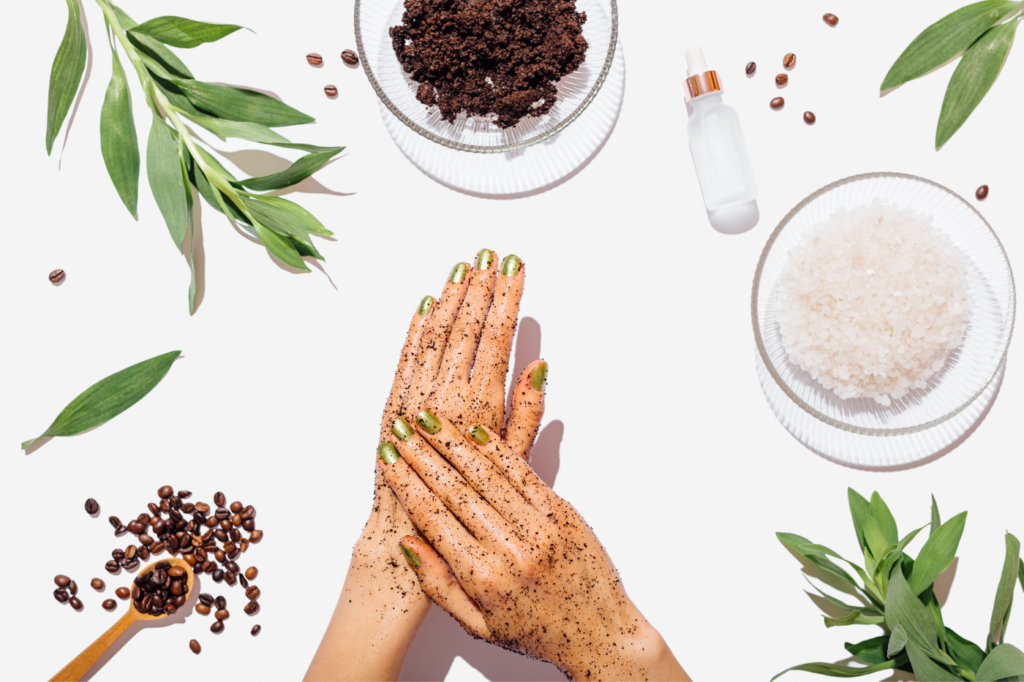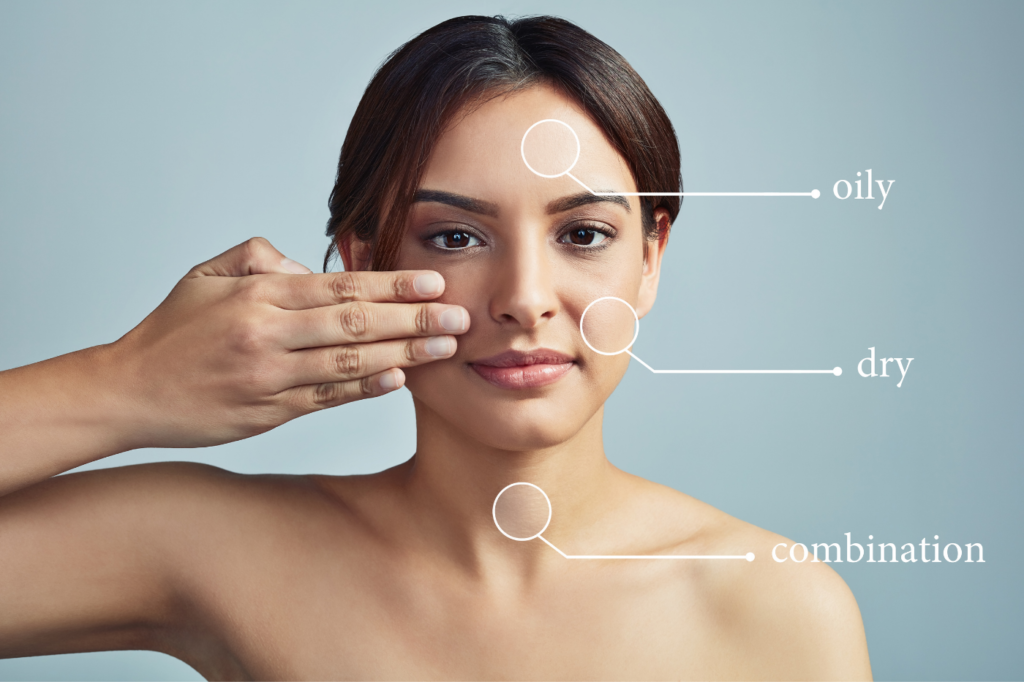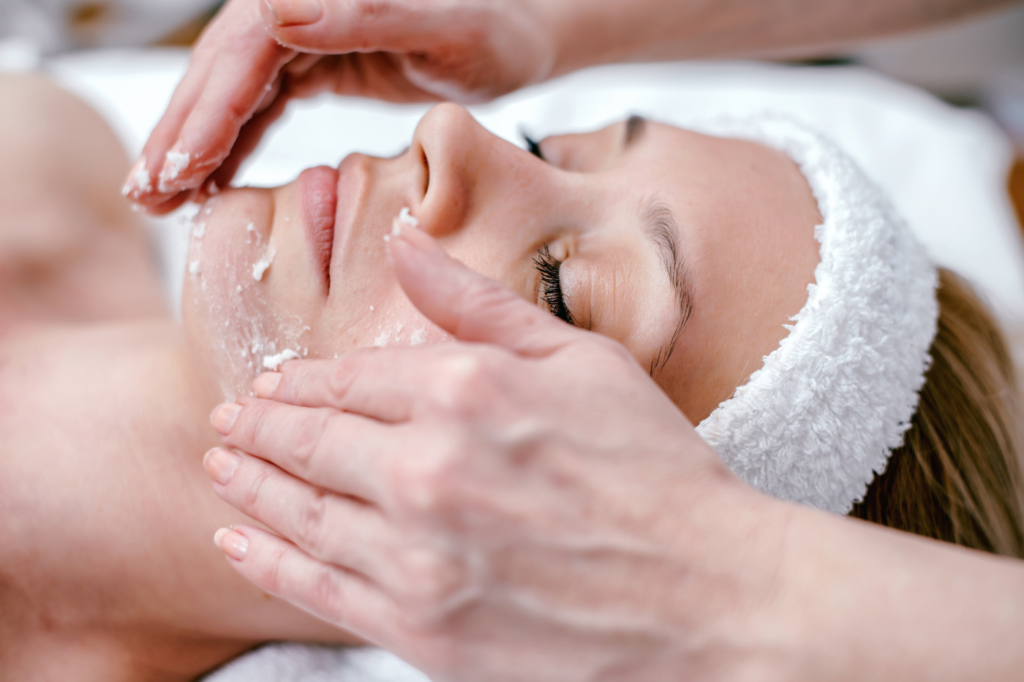A good skincare routine results in bright, healthy skin and a nourished complexion. Exfoliating can be part of your regular routine as long as you take steps to avoid aggravating your skin.
Exfoliating boasts several potential benefits, including:
- removing dead skin cells from the top layer of your skin
- potentially stimulating collagen production
- returning your skin’s healthy glow
Knowing the right way to exfoliate for those brightening effects is essential, as a single method won’t be suitable for every skin type.
Exfoliation for Beginners
Exfoliation is easy enough if you’ve done the research on the type of exfoliant to use for your skin type.
How do you exfoliate your skin? To exfoliate, cleanse your skin and follow the instructions on your desired exfoliant. That may mean applying it to damp skin and rinsing it off, or applying it to dry skin for a certain amount of time.
There are 3 different types of exfoliants. These are physical, chemical, and a combination of both:
- Physical exfoliation: Physical or mechanical exfoliation is what you get from products like a body scrub or face scrub or other exfoliating products that promise to remove buildup on the skin. Exfoliating scrubs are typically applied and then rinsed off.
- Chemical exfoliation: Chemical exfoliants use ingredients like alpha-hydroxy acid (AHA), beta-hydroxy acid (BHA), or natural enzymes. These are typically left on for a certain period of time to allow dead skin cells to loosen or to address a variety of skin issues.
- Combination exfoliation: Combination treatments may look like a scrub with added ingredients found in a chemical exfoliant. These are typically rinsed off after application like a physical exfoliant.
In addition to these at-home exfoliants, a chemical peel is a high-strength chemical exfoliation and skin resurfacing. This cosmetic treatment can improve the appearance of fine lines and wrinkles and reduce dark spots and acne scarring.
You’ll need to see a dermatologist for most chemical peels. Some light acid peels that use ingredients like glycolic acid or salicylic acid are available over-the-counter. Still, they may not be as effective as peels you’d get at the dermatology office.
If you’re just starting out, begin exfoliating once a week to see how your skin tolerates the new addition to your skincare routine.
Always follow up on any exfoliation with a dose of hydration from a moisturizer or lotion. Wear sunscreen daily with an SPF of at least 30 to block further damage and improve collagen production.
How to Exfoliate by Skin Type
How you exfoliate may involve some trial and error. There are general guidelines out there about the best exfoliant per skin type, but it’s possible your skin may not play nice with exfoliating at all.
Exfoliation can cause irritation no matter the skin type, especially if you already use products that contain retinol or other retinoids. In that case, listen to your skin and ease up on the exfoliation.
Dry
Use a chemical exfoliant that includes ingredients like glycolic acid and follow that up with a moisturizer for dry skin. If you want to slough off dry patches, cleansing brushes are a gentler approach than heavy-duty scrubs.
Over-exfoliating can dry out your skin further and damage your skin’s surface. If an exfoliant isn’t working for you, try DIY face masks instead. They can be just as good at reducing impurities on the surface of the skin.
Sensitive
If you have sensitive skin, avoid gritty exfoliants like salt and sugar scrubs. They can leave your skin red and irritated instead of rejuvenated, potentially causing micro-tears that can leave further damage.
Choose a mild chemical exfoliant with AHAs and BHAs that will not only target the layer of dead skin cells at the surface but improve your skin tone and overall complexion less aggressively. You can also try a skin detox, instead, to identify what’s causing your sensitive skin.
Oily
A chemical exfoliant is best for oily skin if you’re targeting your face. Skincare products with ingredients like salicylic acid target oil glands and acne production if you’re prone to breakouts.
For thick, oily skin elsewhere on the body, physical exfoliants may work, as well. Light strokes will still be ideal no matter where you’re exfoliating to avoid irritating your skin.
If you have acne-prone skin, some exfoliants may aggravate your skin and cause more breakouts. Your priority may need to be getting your acne under control first with a combination of skincare and lifestyle changes before starting an exfoliating regimen.
Combination
Combination skin may benefit from either a physical or chemical exfoliant. If you’re most concerned about an oily T-zone, stick with a chemical exfoliant used with less frequency to avoid drying out sensitive areas of your skin. You can also try a combination exfoliant.
How to Exfoliate by Body Part
Not all skin behaves the same. If you want to exfoliate all over for a full-body glow, you’ll need to approach each part differently.
Face
Wash your face with your usual face wash or cleanser. If you’re using a physical exfoliant, apply it in a circular motion with a light touch. Scrubbing hard can irritate your face.
A dry brush, washcloth, or your hands all work here. Use lukewarm water to rinse off the exfoliant, then pat dry.
If you’re using a chemical exfoliant, follow the instructions on the packaging. You’ll likely need to leave the exfoliant on your face for a certain amount of time. Some exfoliating serums are left on as a base before your moisturizer and makeup. It will depend on the exfoliant you choose.
Arms and Legs
Exfoliating your arms and legs can give your limbs a polished look and reduce bumps and dry spots from exposure to the elements and dehydration. It can also prevent ingrown hairs where you shave.
To start, cleanse your skin with your usual body wash or soap. Use a loofah or body brush with your chosen exfoliant to slough off those dead skin cells at the surface. If you shave your legs regularly, avoid scrubbing too often. Shaving is itself a way to exfoliate your skin.
For an even gentler experience, you can exfoliate with a scrubbing mitt after a warm bath. Your skin has softened by then, so you’ll need even less pressure, but it will be primed for smoothing.
Pubic
Exfoliating your pubic area is a good way to avoid ingrown hairs if you shave or wax in that area. In fact, exfoliating before going to your bikini wax appointment will make that appointment more effective and prime your skin for the wax.
How do you exfoliate your vaginal area? To exfoliate your vaginal area, use a small amount of a gentle exfoliant and scrub it along your bikini area. Let the exfoliant sit for a few minutes, then rinse well.
You want to be especially careful not to rub too hard in this very sensitive area to avoid irritation.
In Summary
Exfoliation can be an optional but worthwhile piece of your skincare regimen. The type of exfoliant you choose will depend on your skin type and the area of the skin you’d like to smooth.
Generally, people with sensitive and dry skin types should avoid rough granules that may further irritate their skin. If you’re not sure where to start, talk to your dermatologist about the right exfoliant for you or whether your skin would benefit from regular exfoliation.
Sources
- Rodan, K., Fields, K., Majewski, G., & Falla, T. (2016). Skincare Bootcamp: The Evolving Role of Skincare. Plastic and reconstructive surgery. Global open, 4(12 Suppl Anatomy and Safety in Cosmetic Medicine: Cosmetic Bootcamp), e1152. Full text: https://www.ncbi.nlm.nih.gov/pmc/articles/PMC5172479/
- Soleymani, T., Lanoue, J., & Rahman, Z. (2018). A Practical Approach to Chemical Peels: A Review of Fundamentals and Step-by-step Algorithmic Protocol for Treatment. The Journal of clinical and aesthetic dermatology, 11(8), 21–28. Full text: https://www.ncbi.nlm.nih.gov/pmc/articles/PMC6122508/
- Tang, S. C., & Yang, J. H. (2018). Dual Effects of Alpha-Hydroxy Acids on the Skin. Molecules (Basel, Switzerland), 23(4), 863. Full text: https://www.ncbi.nlm.nih.gov/pmc/articles/PMC6017965/



